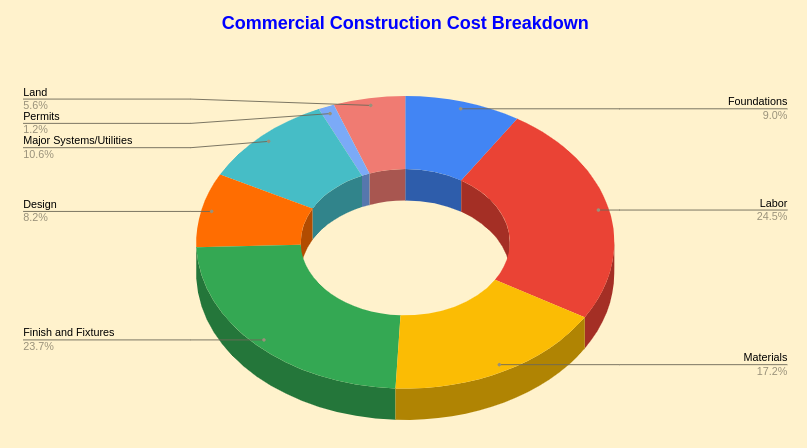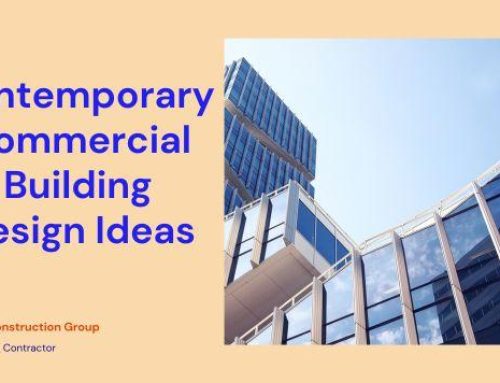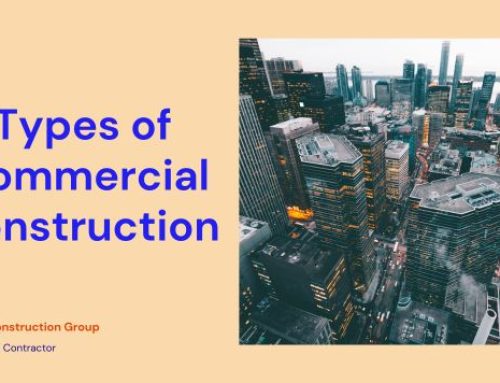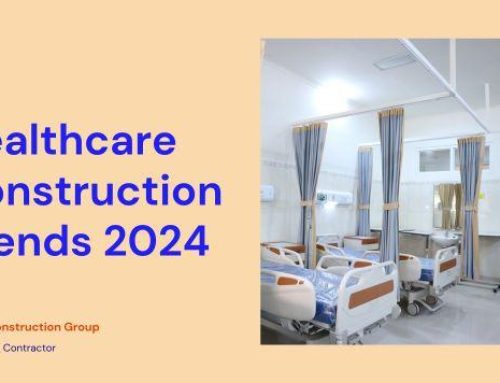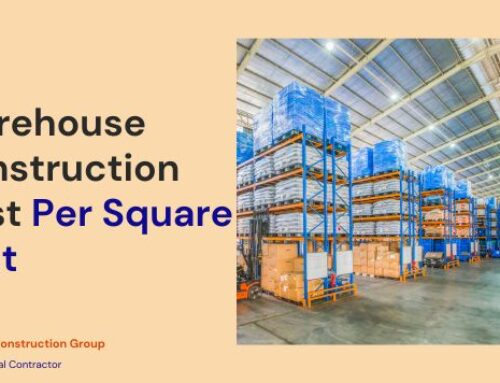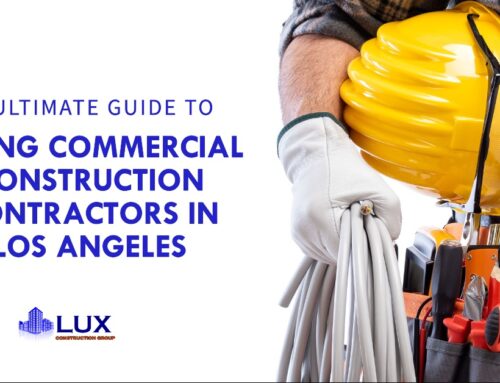Have you ever wondered what drives the costs of constructing commercial buildings?
Imagine this: You have a vision of a magnificent skyscraper or modern commercial building for a shopping mall, healthcare facility, or educational institution. But, as you start crunching the numbers, the cost per square foot starts to weigh you down. You begin to wonder, how much do the materials cost? What about the location? The zoning regulations?
In this guide, we will journey through the intricacies of construction expenses, explore the factors that affect the cost per square foot, and provide you with the tools to control these costs.
So, get ready to turn your commercial construction dreams into reality, without breaking the bank!
When it comes to commercial construction projects in Los Angeles, understanding the cost per square foot is important. This guide provides up-to-date information on the average construction costs in Los Angeles for the year 2023. By having a clear understanding of these costs, you can effectively plan and budget for your commercial construction project in this vibrant city.
The commercial construction sector in Los Angeles is a driving force behind the city’s urban development, attracting businesses and creating employment opportunities.
Top Factors Affecting Commercial Construction Costs
Several crucial factors can influence the costs of commercial construction. Understanding these factors is essential for the successful planning and budgeting of any construction project. Here are some of the most significant factors:
Site Location and Accessibility
The location of the site can greatly impact construction costs. Sites that are harder to access or in more remote locations may require additional transportation costs, while sites in urban areas may have higher land prices and permit fees.
Size & Complexity of The Project
The larger and more complex a construction project is, the more it will typically cost. Projects that require more specialized equipment, unique designs, or intricate systems will also be more expensive.
Building Materials And Finishes
The type of materials and finishes used in construction can have a significant impact on costs. High-end finishes and expensive materials will naturally cost more than basic or lower-end options.
Labor and Subcontractor Costs
Labor costs, including wages, benefits, and insurance, can significantly impact construction costs. Additionally, subcontractor costs for specialized work such as electrical, plumbing, or HVAC can add to the overall expense.
Design and Architectural Features
Unique and intricate architectural designs or features will generally cost more than standard designs. The level of customization and detail will also influence costs.
Permitting and Regulatory Requirements
Permitting and regulatory requirements can vary greatly depending on the location and type of construction project. Compliance with these requirements can add time and expense to a project.
Market Conditions and Economic Factors
Economic factors, such as supply and demand and inflation, can influence construction costs. Additionally, fluctuations in material and labor costs can impact pricing.
Considering these factors carefully, developers and construction managers can create realistic and accurate cost estimates for commercial construction projects. Proper planning and budgeting are essential for the successful completion of any construction project.
Commercial Construction Cost Breakdown
Pricing a commercial project involves numerous factors that contribute differently to the total cost. The National Association of Home Builders provides data that breaks down commercial construction costs into components.
Here are the major factors:
Foundations
Excavation, concrete fills, backfills, and retaining walls, if necessary, account for 11.3% of the total construction costs.
Labor
Labor costs vary between 20% to 40% of the total cost. These costs depend on direct and indirect costs. Direct costs are the employee’s wages, and indirect costs include employee benefits, taxes, training, and employee development. Also, labor costs change depending on the labor burden.
Materials
The cost of materials specified by the design team influences building costs. Steel buildings that require a lot of fabrication are more expensive than regular concrete structures. Material costs vary from 17.3% to 25%.
To get more details, refer to our post on The Different Types of Concrete & Their Uses in Construction
Region
Zoning laws in different regions affect the cost of a project. For example, accessibility to materials is more difficult in highly populated cities than in suburban areas. A project in New York City can cost almost twice as much as in midwestern towns.
Finish and Fixtures
High-grade finishes significantly increase costs compared to lower or mid-grade options. Exterior finishes account for 15% of the construction costs, while interior finishes take up 29.1% of the total costs.
Design
Design fees range between 1% to 2.5% of the total project costs for small projects, whereas more complex projects can cost anywhere between 4.5% to 16%. These percentages include a 20% to 50% contractor markup. As a result, engineers’ fees are the least in a project.
Major Systems/Utilities
Major systems such as electrical installations, plumbing, and HVAC account for an overall 12.9% of the construction costs. Plumbing takes up 4.3% of the construction costs, electrical installations account for 4.2% of the costs, and HVAC takes up an overall 4.4%.
Permits
Building permits cost between 0.5% to 2% of project costs, depending on the type and size of the project.
Land
Landscaping, including driveways and outdoor cleanups, takes up 6.8% of the overall construction budget.
The Average Commerical Construction Costs in Los Angeles California
The average commercial construction costs per square foot in Los Angeles, California can vary depending on the building type. Here’s a table showing estimated average costs per square foot for different building types:
Building Type |
Average Cost Per Square Foot |
| Office Building | $250 – $550 |
| Retail Building | $200 – $500 |
| Warehouse | $100 – $150 |
| Medical Facility | $300 – $650 |
| Hotels | $250 – $500 |
| Apartment Building | $150 – $300 |
| Restaurant | $200 – $400 |
| School | $200 – $400 |
The average commercial construction costs per square foot in California, USA can vary depending on various factors such as location, size of the project, materials used, labor costs, and other factors. However, according to recent data, the average cost of commercial construction in California ranges from $200 to $400 per square foot.
It’s worth noting that these estimates are subject to change based on market conditions, construction demand, and other variables. It’s always best to consult with a local construction expert to get a more accurate estimate for your specific project.
Commercial Construction Cost Per Square Foot – By Building Type
The cost of constructing buildings varies greatly depending on the type of building. We have provided average estimates based on location in the United States. However, we will now delve into the breakdown of costs based on building types across the country.
Commercial Office Buildings
The cost per square foot for a single-story office building in the United States averages $313. Mid-rise office buildings cost about $562 on average, and high-rise buildings cost about $660.
Hospitality and Lodging Facilities
When it comes to hospitality and lodging facilities, different locations have varying standards and modes of construction that affect costs. For instance, three-star hotels are cheaper, costing $478 per square foot, whereas five-star hotels cost slightly more at around $691 per square foot.
Warehouse and Manufacturing Facilities
The cost per square foot for constructing a regional distribution warehouse is $214 on average, while a light industrial warehouse costs around $238. Technology laboratories are more expensive at around $635 per square foot, depending on the type of manufacturing or use case.
Healthcare Facilities
Healthcare facilities are a necessity in every city, and new facilities are constructed frequently. Acute care facilities are the most expensive, costing $888 per square foot, while medical office buildings average around $498 per square foot. Specialty clinics cost approximately $619 per square foot on average.
Education Facilities
Education is a crucial part of society, and constructing primary or secondary schools costs around $327 per square foot, which is the average for building elementary, middle, and high schools. For universities and other higher education facilities, classroom buildings cost around $580, laboratory buildings cost about $756 per square foot, university buildings cost $596 per square foot, and dormitories are the cheapest at around $322 per square foot.
Retail Shopping Facilities
Retail shopping centers come in two types: neighborhood strip centers and regional malls. They are enormous and thus relatively expensive, with the average cost of a neighborhood strip center at $371 and the average price of a regional mall at $537 per square foot.
Parking Lots
Compared to all other commercial building structures, parking lots are the cheapest to construct. An underground multi-level parking structure costs about $143 per sq ft, while an above-ground parking lot costs $71 per sq ft.
Public and Community Facilities
Public and community facilities are among the most expensive structures to build since they serve many people. For example, gymnasiums and recreational centers cost around $403 per square foot. Government administration buildings cost about $591 per square foot, while police stations cost $580 per square foot. Performing arts centers and museums are the most expensive public buildings, costing around $892 on average.
LUX Construction Group – Commercial Construction Contractor
The cost per square foot of commercial construction can vary significantly depending on several factors as we mentioned above. That’s why every commercial building owner needs to have a good understanding of these factors and their impact on project costs to ensure a successful and cost-effective construction project.
As the commercial construction industry continues to evolve, it’s essential to stay up-to-date with industry trends and advancements in technology and construction techniques. Building owners should also consider sustainability and energy efficiency considerations to reduce their long-term operating costs and environmental impact.
At LUX Construction Group, we understand the importance of cost-effective and sustainable construction practices for commercial building owners. Our team of experienced professionals is dedicated to delivering high-quality construction projects while keeping costs under control. We leverage our expertise and innovative approach to deliver exceptional results that exceed our client’s expectations.
Contact us today to learn more about how we can help with your commercial construction project.

![Commercial Construction Cost Per Square Foot in Los Angeles - [2024 Guide] 1 Commercial Construction Cost Per Square Foot](https://www.luxdevla.com/wp-content/uploads/2023/04/commercial-construction-cost-per-square-foot.jpg)
